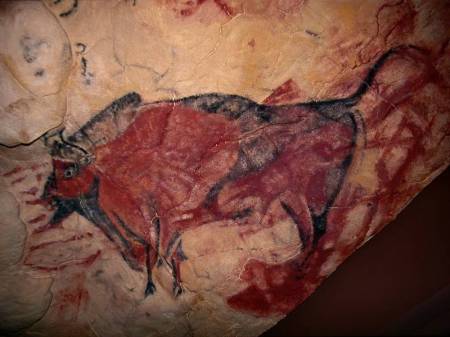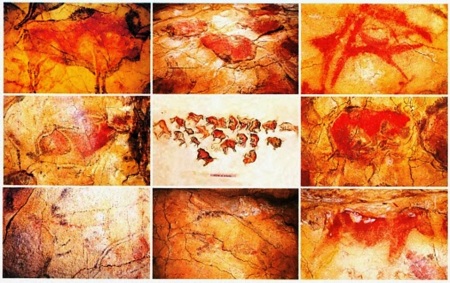
“Wherever he saw a hole he always wanted to know the depth of it. To him this was important.” Jules Verne – ‘Journey to the Centre of the Earth’
After a perfect undisturbed sleep in the quiet village we woke to an immaculate blue sky and wide sweeping views over the expansive countryside and the surprisingly green fields sweeping down towards the city of Talavera de la Reina and beyond that to the Montes de Toledo rising slowly through the dispersing cloud.
Breakfast wasn’t served until half past nine so we had time for a walk into town where we were expecting to see a market in the Plaza de Torres but we must have got our days mixed up because the Plaza was quite empty. We wandered lost around the streets that were beginning to stir into life and saw the same old men who had been there the previous night and clearly have nothing more to do all day in this tiny place than hang around the main square.
Perhaps they don’t even go to bed.
Breakfast at the El Cerro was excellent, just a simple affair of Iberian ham, Manchego cheese and toast with olive oil and tomato but it was quite perfect. One of the hotel staff was very friendly and spoke good English and was interested in our travels around Spain and intrigued that we picked out of the way places like Pedro Bernardo instead of the well known tourist towns. He told us that he wanted to move to Madrid and we assured him that we liked it better this way.
We told him that we were driving to Cáceres and he became quite insistent that we should take a short detour from our route and visit the Cuevas El Aguila, the Eagle Caves, in the foothills of the Gredos mountains but we had a long way to go and were not sure if we liked caves enough to go to the trouble. When we checked out a few minutes later he reminded us again to make the visit and assured us that we would not be disappointed so it seemed rude not to go so we set off in the direction that he carefully marked on our map.
I liked Pedro-Bernardo, it was the sort of place that could go on a ‘must go back to one day’ list but I won’t go back because I fear that if I did it will have changed dramatically from how I remember it. I’ll just keep it locked away in my memory.
The drive out took us to the Sierra de Gredos which is a mountain range in the centre of the Iberian Peninsula, located between Ávila, Cáceres, Madrid and Toledo and has been declared a regional park. We were on the road to Cáceres anyway so it wouldn’t delay us too long to visit the caves and when they began to be signposted we turned off and took a succession of minor roads to the attraction.
We followed a quiet rural road, a track really to a large but empty car park and parked close to the entrance and still not convinced that this was a good idea made our way to the kiosk and paid €7 each entrance and waited five minutes for the guide to take us inside.
As soon as he appeared and escorted us underground we were immediately glad that we made the detour because this was an awesome underground cavern, over twelve million years old and inside a great hall of six thousand square yards and over half a mile of pathway to walk through the great stalactites and stalagmites that rose and fell in majestic multi-coloured columns throughout the cave.
The guide apologised several times for being unable to speak English but we reassured him that this didn’t matter because so much of his narrative would have been superfluous anyway and we could imagine for ourselves what he was telling us. As usual in underground caves he kept pointing out natural sculptures that, with a lot of imagination, had a resemblance to familiar icons – the Madonna and Child (several times), Bulls, Matadors and famous Spanish Kings and Queens.
The temperature inside the cave is constant throughout the year, with an average of twenty degrees celsius and it was this that led to its discovery in 1963 by a group of children who noticed water vapour escaping through a hole in the ground caused by the difference in temperature of the caves and the outside. They crawled inside to investigate and discovered the Aladdin’s cave with all of its natural treasure and a year later the owners of the land, obviously sensing that there was gold in them thar hills, made it accessible and opened it to the public.
It took about forty minutes to complete the circuit of concrete paths and various viewing platforms and when we emerged back into the daylight we were so pleased that we had taken the advice to visit because this was one place that was certainly worth a detour.
The original plan was to drive to Extremadura and stop at the town of Trujillo but the combination of the later than usual breakfast and the unscheduled visit to the caves meant that our original timings now had to be reworked so we decided to miss Trujillo and drive the hundred and twenty miles straight to Cáceres instead.
The drive was effortless along a delightfully spacious motorway as we drove in a relentless straight line across Spain’s Central Plateau at some point crossing into the Province of Extremadura, the fifth largest in Spain.
Other Cave Stories:
Drogarati Cave and Blue Lagoon, Kephalonia
Altimira Caves, Spain
Blue Lagoon, Capri
Krakow, Wieliczka Salt Mine
Lanzarote – Cueva de los Verde
Cave Houses of Guadix
Llechwedd Slate Caverns, Wales
Click on an image to view the gallery…



















![altamira[1]](https://apetcher.wordpress.com/wp-content/uploads/2013/01/altamira1.jpg?w=450&h=330)



![altamira[1]](https://apetcher.wordpress.com/wp-content/uploads/2013/02/altamira1.jpg?w=450&h=318)
